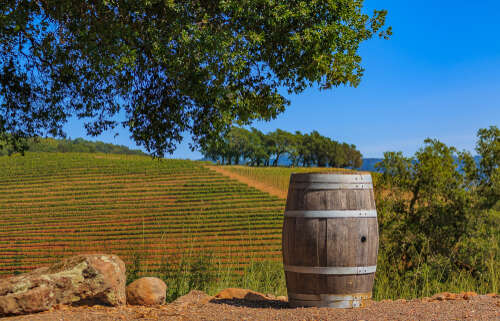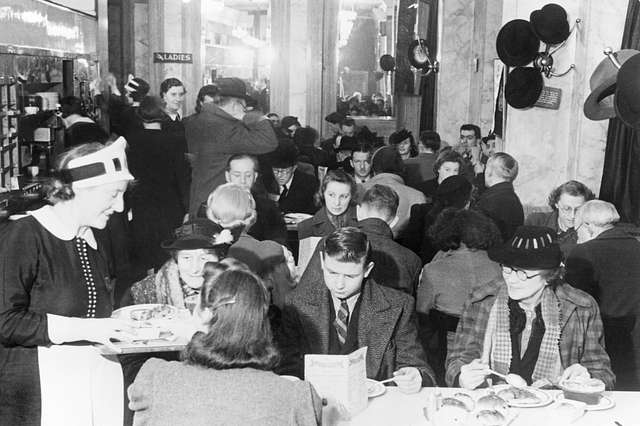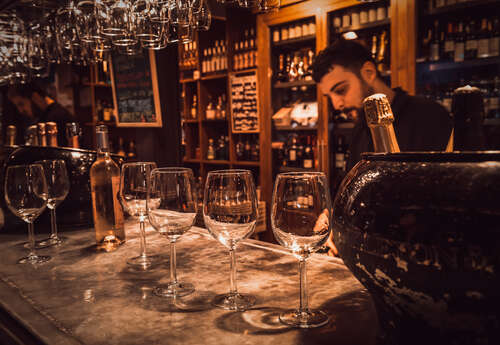
Kathleen Burk reviews On California: From Napa to Nebbiolo… Wine Tales from The Golden State by Susan Keevil (ed).
This is the most difficult type of book to review, consisting as it does of 39 essays of varying length and type, most of them very interesting and all of them well written. It is not a history of, and commentary on, California wine in toto; rather, it looks at, for example, some of the pioneers, at the problems they faced and how they overcame them (when they did), at the geography, including the impact of the Pacific Ocean, at the endless types of soil, and, finally, at the various triumphs of historical and contemporary figures in the California wine industry. This may sound tediously worthy, but it is not. Reading this book provides a lot of both pleasure and learning, a combination not to be sniffed at.
A number of the essays deal with the history of certain grape varieties or regions. Jane Anson, one of the stars of the Bordeaux firmament, traces the journey of Cabernet Sauvignon from Europe to California, stopping along the way in Philadelphia. Paul Draper, first the winemaker and now the genial overseeing spirit of Ridge Vineyards, describes the arrival and distribution of Zinfandel, which many claim to be California’s native grape.
This is wrong but possibly appropriate; it was actually an immigrant from Europe, as were many in the wine industry. Gerald Asher, a wine writer for decades who is celebrated for his range, his knowledge, his ability to see below the surface, and his compelling writing style, gives the history, an illuminating description, and an analysis of Edna Valley, “California’s most prestigious Chardonnay appellation.” A fourth example is the very interesting compare-and-contrast approach to Napa and Sonoma by the journalist and author Elin McCoy, which bears some resemblance to the fable of the city mouse and the country mouse.
Some of the other essays are biographies of various types. One example is Kelli White’s “The Boffins, from Hilgard to Amerine.” Here she discusses the people responsible for bringing chemistry into the equation and helping farmers and winemakers to grow better grapes and make better wine. It was also the case that they often had to convince these farmers and winemakers that they needed their help.
I particularly enjoyed this essay. First of all, it deals with people who were vital to the story but who are often ignored or forgotten; and secondly, because rather than primarily celebrating, as usual, the scientists of UC Davis—an institution that was, indeed, very helpful in the development of grape-growing and winemaking—she also points out the errors and wrong-turnings that they propagated, such as recommending a rootstock that was not entirely immune to phylloxera. One or two of the authors, in fact, make the comment that Davis was (is?) vital in learning how to produce industrial wine but was much less helpful to the artisan winemaker. Balance is always good. The essay on the Gallos by Elaine Chukan Brown, while interesting, is almost too balanced; it would have been illuminating to discuss some of their marketing strategies.
I accord to myself the proud label of wine nerd, and there are some wonderful essays for the likes of us. Randall Grahm, one of the original Rhône Rangers, writes a thoughtful and substantial essay on how to produce unique and distinctive wines in California. Some advantages of the Golden State are that there is still some virgin land, that it has an exceptionally benign climate, that it has a cultural openness to innovation and experimentation, and that there is easy access to a market—the tourist market. Grahm does quite a bit of cross-breeding of grapes—actually, self-crossing—to produce new varieties that may be useful in the presence of debilitating viruses. He also believes that such self-crossing might produce grapes that could improve winemaking quality or flavor intensity and complexity.
Not surprisingly, he urges winemakers to concentrate on what their terroir can give their wines. In short, they should concentrate not on the flavors of their grapes but on what the terroir can contribute and how their wine can express the qualities of a specific site. California should look to express its own unique voice, he argues, not try to echo the “paradigm” of the Old World.
In something of the same approach are the three essays in “Terroir… The Dirt Matters!” I found particularly interesting the piece by John Szabo MW, “A Volcanic Tour of California’s North Coast,” not least because it ties together the places where one can find volcanic wine country in Napa, Sonoma, and Lake counties. The landscape detail is quite riveting, at least to those of us who like rocks and dirt, but a contour map would have helped. The description of the essay calls it a geologic tale of Northern California. Elin McCoy returns with an essay on finding Napa’s top terroir: Do you find it on the “benchlands” or the hillsides?
California in 39 Steps: Packed with interest
Along with the advantages of California as set out by Randall Grahm, there were and are disadvantages, some of them virtually insurmountable. One of them, as described by doyen of wine writers Hugh Johnson, was Prohibition, which, between 1920 and 1933, virtually destroyed the wineries of California (along with those of, for instance, Missouri, New York, Virginia, and Kansas—indeed, of the entire United States). Norm Roby, a distinguished California-based wine writer and judge, sets out the depressing tale of phylloxera, which has not gone away and returns periodically to strike again.
He concentrates on the period since the last extremely serious outbreak in the late 1980s and brings it up to date in late 2020. One outcome, according to one winemaker, was to change the emphasis from the cellar to a stronger focus on the vineyard. Elaine Chukan Brown contributes an essay on the sufferings of producers from the extensive drought and wildfires: Can producers bounce back? Can they continue to plant Cabernet in the hottest parts in the Napa Valley or cultivate vineyards close to forests? Clare Tooley MW writes about an unexpected threat to vineyard space: quality marijuana. Its growers, too, look for the best terroir, and it is considerably faster to grow, harvest, and sell. She concludes that it is here to stay in California, but one implication for California winemaking is that it will be even more the case that only the very rich will be able to establish themselves in the wine industry.
While the greater proportion of the essays were written specially for this book, there are a number that have their homes in earlier publications: Gerald Asher’s essay is taken from his Vineyard Tales: Reflections on Wine;1 Jon Bonné’s contribution on the post-Prohibition mavericks and their share of the responsibility for the ways
—both good and bad—that wine has developed up to the present day, comes from his book The New California Wine: A Guide to the Producers and Wines Behind a Revolution in Taste;2 Hugh Johnson’s essay on Agoston Haraszthy is chapter 35 of The Story of Wine: From Noah to Now, the new edition of his 1989 classic, The Story of Wine;3 Harry Waugh’s piece on the new Napa is an excerpt from his 1972 book Diary of a Winetaster: Recent Tastings of French and California Wines.4
There is an excerpt from Rex Picket’s book Sideways,5 on which the iconic and very enjoyable film was based; and there is another excerpt from George Taber’s Judgment of Paris: California vs France and the Historic 1976 Paris Tasting that Revolutionized Wine.6 William Kelley’s essay on the development of Cabernet Sauvignon in California since 1997 was first published in Decanter magazine in 2017; Bob Thomson’s 1984 essay on California and wine critics is an excerpt from The University of California/Sotheby Book of California Wine;7 Harry Eyres’s essay on Napa Cabernet first appeared in 2021 in The World of Fine Wine; and Adam Lechmere’s essay on Screaming Eagle was published in Decanter in 2012.
I list these because I very much appreciate the editor bringing some of the classics of wine writing, as well as some more recent but notable publications, to the attention of the reader. The book also includes a curious but enjoyable section with a touch of the glossary about it, called an “A–Z of California Wine,” which includes short biographies, explanations, and the occasional quotation about wine.
Other writers contributed on various topics, all of whose short essays I enjoyed.8 Anyone who reads very much about wine will recognize that the editor has gathered together many of the luminaries of the trade. In short, this book is packed with essays that anyone interested in wine will enjoy—and if you are reading The World of Fine Wine, that must include you.
Notes
1. Chronicle Books, San Francisco; 1990.
2. Ten Speed Press, Berkeley; 2013.
3. Académie du Vin, London; 2020.
4. Quadrangle, New York; 1972.
5. St Martin’s Press, New York; 2004.
6. Scribner, New York; 2005.
7. Edited by Doris Muscatine, Maynard A Amerine, and Bob Thomson.
8. They include Stephen Brook, Steven Spurrier and Patricia Gastaud-Gallagher, Fiona Morrison MW, Lisa Perrotti-Brown MW, Liz Thach MW, Warren Winiarski, Margaret Rand, Brian St Pierre, Natasha Hughes MW, Victoria James, Esther Mobley, and Mary Margaret McCamic MW.
On California: From Napa to Nebbiolo… Wine Tales from The Golden State
Susan Keevil (ed)
Published by the Académie du Vin Library, 2021
271 pages; £30






